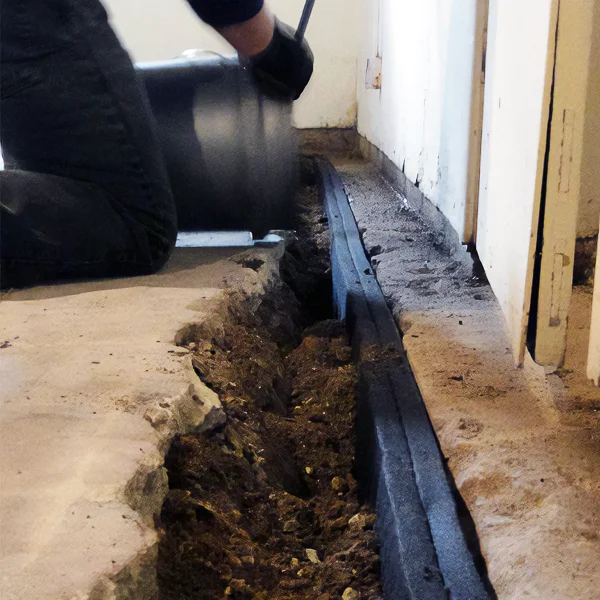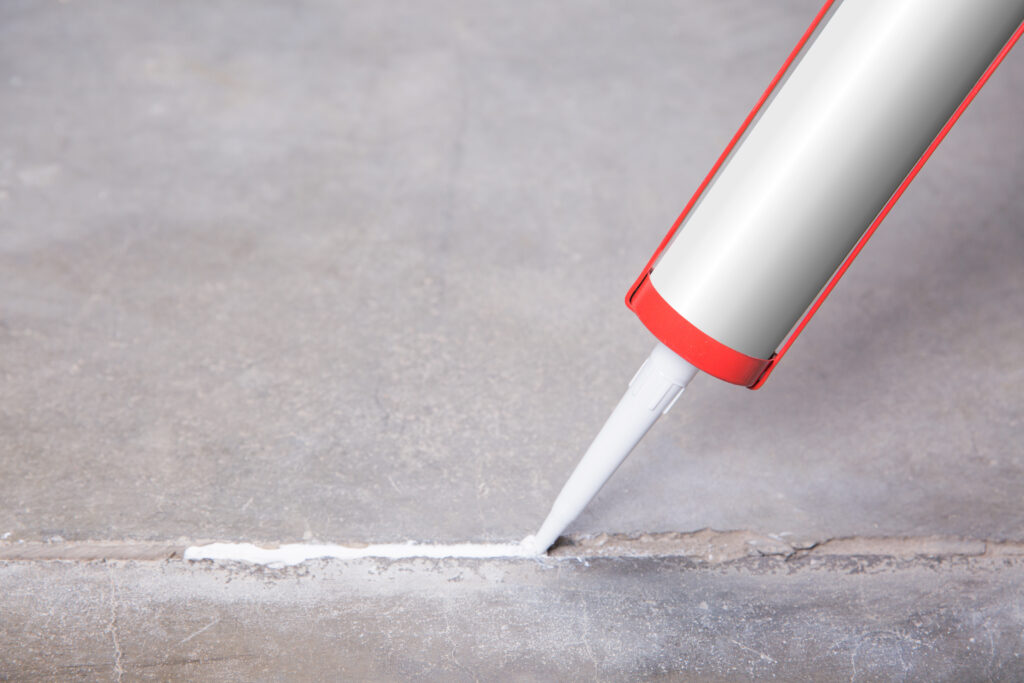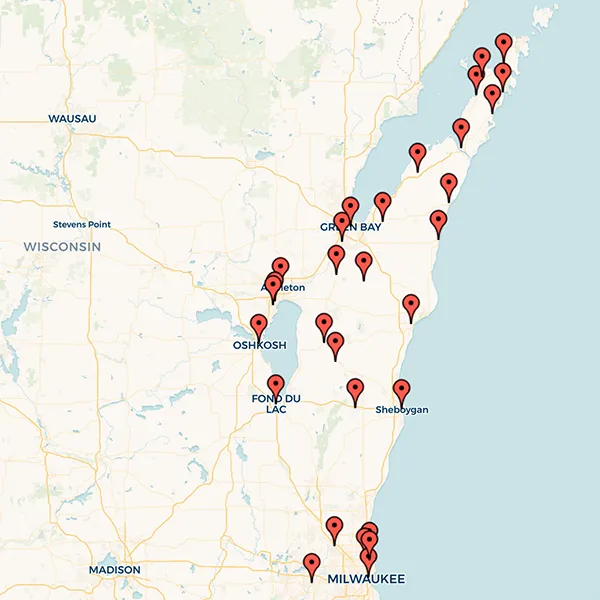Securing Reliable Basement Waterproofing with Confidence
Protecting your home from water damage starts with a dry, healthy basement. At RaiseRite, we are Wisconsin’s trusted experts in residential basement waterproofing, providing reliable solutions to safeguard your property from leaks, flooding, and moisture issues. Whether you’re dealing with visible water damage or looking to prevent future problems, our team offers comprehensive waterproofing services tailored to your needs. From interior drainage systems to exterior waterproofing solutions, we ensure long-lasting results that protect your investment.
With Wisconsin’s fluctuating weather and seasonal rains, basement waterproofing is an essential step in maintaining your home’s structural integrity. RaiseRite combines decades of experience with advanced techniques to deliver effective, durable solutions for every homeowner. Whether you’re in a historic home or a newly built property, our team has the expertise to keep your basement dry and your foundation secure.
Why Choose RaiseRite?
RaiseRite has been a trusted name in Wisconsin for over 40 years, delivering unmatched expertise in foundation repair, concrete lifting, and residential basement waterproofing. With a focus on quality, customer satisfaction, and eco-friendly practices, we tailor every solution to your unique needs. Our team of experienced professionals uses advanced technology and proven methods to provide durable, cost-effective waterproofing solutions. When you choose RaiseRite, you’re choosing a local leader committed to protecting your home and delivering peace of mind.
LET US HELP YOU ON YOUR NEXT PROJECT
Fill out the form to get a quote today

Basement Waterproofing Solutions: Get Dry, Stay Dry.
There’s not much worse than having to deal with a leaky, musty, or moldy basement. While the cause of these issues may be minor, the consequences of not repairing them can be much more costly. If you believe your basement is damp, musty, leaking, or contains mold, you should have it inspected. Our free estimate will identify the cause of the issue and provide recommendations for resolution. Oftentimes, it’s basement waterproofing that’s necessary to correct your issues, such as solutions like interior drain tile systems, exterior wall sealing, foundation sealing, or sump pump pit installation to ensure your basement stays dry and protected.
Common signs of a wet, leaky basement:
- Mold & mildew
- Musty odor
- Dampness
- Condensation
- Chipped, discolored paint
- Mold & mildew
- Musty odor
- Dampness
- Condensation
- Chipped, discolored paint
- Insects & rodents
- Rusty metal
- Rotting wood
- Cracks in walls
Crawl Space Waterproofing
A damp or wet crawl space can lead to a host of problems, including structural damage, poor air quality, and mold growth. At RaiseRite, we offer expert crawl space waterproofing solutions to protect your home from moisture and humidity issues. Our comprehensive services include crack injection, crack sealing, and crack repair.
Proper crawl space waterproofing not only prevents water damage but also enhances energy efficiency and improves the overall health of your home. With RaiseRite’s proven techniques and experienced team, you can rest assured that your crawl space will be safeguarded against moisture, ensuring long-lasting protection and peace of mind.

What can cause a wet and leaky crawl space or basement?
There are a number of reasons why your crawl space or basement could be wet or leaking. Hydrostatic pressure, temperature differences and fluctuations, cracks in your basement walls and unprotected window wells are all possible culprits. With so many variables necessary to keep your basement dry, it’s easy for one small component to give way, resulting in much larger issues.

Basement Walls
Basement walls that are poured (not blocks) often leave a space between the footer and the floating slab. Water needs just the smallest space to get in, so the small space that often forms between poured walls and the floor slab can allow just enough space to let water to seep in, resulting in damp walls, wet floors, and mold.

Concrete Floors
While you may not realize it, concrete flooring can sweat from the condensation created by the temperature difference between the cool earth below and around your homes foundation, and the interior of your basement. This temperature difference, along with hydrostatic pressure, can push water up through weak or cracked concrete, causing dampness, standing water, and water damage.

Hydrostatic Pressure
Hydrostatic pressure is the force at work in hydraulics. Pressure exerted by gravity, as well the ground above, onto a fluid at rest, can build up between your foundation walls and the material surrounding them, causing cracks to form in your foundation. The hydrostatic pressure will then push water through the cracks, resulting in a wet crawlspace or basement.

Block Walls
Block wall construction can be troublesome, as it can easily hide water damage that won’t be evident until the damage really escalates. Once water finds a crack or crevice it can penetrate, it is possible the entire cavity within blocks can fill with water, or it can travel straight to the bottom of the wall inside the blocks, causing mold or rotting, often long before you have any visible indication that there is damage. By the time you do notice a water problem, mildew and mold growth are generally present within the concrete blocks on your wall.

Window Wells
Any area where moisture and water can collect can be a potential entry point for that moisture or water in your basement. Window wells that are not covered or protected can act as a bucket for rain water, which may ultimately find its way into your basement. Covering your window wells is a cheap and easy solution to help deter the drainage of water into areas where you don’t want it!
Basement Waterproofing FAQs
Basement waterproofing is the process of preventing water from entering your basement through walls, floors, or foundation cracks. It helps protect your home from water damage, mold growth, and structural issues, ensuring a dry and healthy living space.
Signs include visible water leaks, damp or musty odors, condensation on walls, mold or mildew growth, efflorescence (white powdery residue), or cracks in walls or floors.
Common methods include interior waterproofing (like drainage systems and sump pumps), exterior waterproofing (applying waterproof coatings and membranes to the foundation), and sealing cracks or gaps with epoxy or polyurethane.
While minor issues like sealing small cracks can sometimes be DIY projects, comprehensive waterproofing requires expertise to ensure long-lasting results. Hiring professionals ensures proper diagnosis and tailored solutions.
The small injection holes mean less surface damage, and the process is virtually mess-free.
The lifespan depends on the method used and the quality of materials. Professional waterproofing systems can last 10–25 years or more with proper maintenance.
We LIFT IT ALL! Sidewalks, Driveways, Pool Decks, Footings, Patios, Garage floors, Basement floors, Office floors, Warehouse floors, Highways, Bridge Approaches, Seawall Repair, and Voids. If you are not sure if your concrete can be raised, call us for a Free Estimate.
Raising settled concrete can be half the cost of replacing it with less damage to your landscaping and downtime. Our expert estimators will be able to assess and provide you with an accurate, FREE estimate for your project.
The cost varies based on the size of the basement, the extent of water damage, and the chosen method. A professional inspection from RaiseRite will provide an accurate estimate.
Yes, effective waterproofing reduces moisture levels, which helps prevent mold and mildew growth, creating a healthier environment.
Even if your basement hasn’t leaked yet, waterproofing can be a preventative measure, especially in areas with heavy rainfall, high water tables, or older foundations.
Interior waterproofing manages water that enters the basement, often with drainage systems and sump pumps. Exterior waterproofing prevents water from entering by applying barriers or coatings to the outside of the foundation.
Most projects take 1–3 days, depending on the method used and the size of the basement.
Contact RaiseRite Today
Don’t let water damage detract from the beauty and safety of your property. Contact RaiseRite today for a free estimate and learn how our basement waterproofing services can restore your basement quickly, affordably, and professionally.


